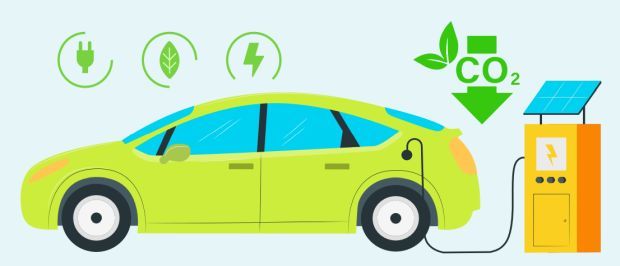
Malaysia has the right foundations to operationalise a low-carbon transport ecosystem and is picking up the pace in green mobility.
INTROVERTS and extroverts experienced diverse impacts when Malaysia implemented the very first movement control order (MCO) on May 18, 2020 to curb Covid-19 infections and fatalities.
The former played into their strengths of adapting to social distancing and isolation – replenishing their energy during the ample ‘me time’ the MCO had granted them.
While the latter, whose brain’s reward circuitry is activated when in a social environment and feel the spotlight of attention, found themselves craving face-to-face human interaction.
However, there is one similarity between these two contrasting personalities. Both enjoyed the near empty roads – something which is dearly missed once the MCO lifted and Malaysia transitioned into the new normal.
Traffic reverted to being horrendously congested. This is an unsurprising phenomenon given that Malaysia is a country which has the most cars in the region with the number of cars outnumbering people, producing a ghastly amount of greenhouse gas (GHG) emissions.
This, however, can be remedied. The Malaysian Green Technology and Climate Change Corp (MGTC) chief executive officer Shamsul Bahar Mohd Nor believes that Malaysia has the right foundations to operationalise a low-carbon transport ecosystem.
He says the green mobility shift in the nation has picked up its pace tremendously ever since the gazette of the Low Carbon Mobility Blueprint (LCMB) in 2021.
“With several milestone targets set, we are looking at immediate action plans, medium and long term initiatives that would not only spur the whole adoption of eMobility for the consumer market, but most notably establish platforms for the electric vehicle (EV) industry to invest, manufacture and produce electric vehicles and EV components in Malaysia.
“The migration from internal combustion engine (ICE) to EV is deemed significant in creating a new wealth of economy that would generate the demand for skilled workers, revolutionising Industry 5.0, mushrooming the supply chain ecosystem and most importantly impactfully reducing the GHG emission footprint,” says Shamsul Bahar.
Stretching green mobility
There are several factors that would propel Malaysia’s development of a comprehensive low-carbon transport ecosystem, one that reduces GHG emissions and promotes sustainable economic growth and energy independence.
Noting that 70% of the nation’s energy mix will be from renewable sources by 2050, Shamsul Bahar says the three most significant sources of energy would be solar, hydro (mainly in East Malaysia) and biomass.
“Geographically, Malaysia has abundant sunlight that would generate energy to power up off grid charging stations.
“We have started solar photovoltaic (PV) charging stations at five sites back in 2018 and are currently looking at ways to increase those numbers and efficiency while reducing the cost,” he says.
Meanwhile, the launch of LCMB has resulted in the government providing more incentives such as tax exemptions for importing EVs, tax rebates for installing wallboxes in private homes, financial guarantees under the Green Technology Financing Scheme (GTFS), and shortened approval periods for installing charging stations.
“At this point in time, there are slightly above 11,000 battery electric vehicles (BEV) in Malaysia. With almost 1,500 charging stations nationwide, our ratio is one to 7.3.
“The current European standard is one to 10, but our ultimate projection is to increase the infrastructure to 10,000 stations nationwide by 2025.”

Shamsul Bahar says Malaysia is on track with immediate action plans, medium and long term initiatives that would spur adoption of eMobility and establish platforms for the EV industry to invest, manufacture and produce electric vehicles and EV components in Malaysia.
However, the slim availability of EV models in the affordable range segment poses an obstacle in the adoption of EVs among Malaysian consumers.
According to Shamsul Bahar, there are over 30 models and 50 variants available, but most are priced above RM250,000.
“Therefore, the government has granted tax exemption for importing EV parts and components to incentivise the private sector to produce more completely knocked down (CKD) vehicles which can spur production of cars with an on-the-road price (OTR) of below RM100,000,” he shares.
In an effort to place emphasis on electric two-wheelers, he reiterates that the government has also announced incentives in the form of rebates for electric motorcycles purchased by selected target groups in the recent Budget 2024 announcement.
Additionally, many local municipalities are fast adopting mass transportation EV in their low-carbon plans.
He says the Investment, Trade and Industry Ministry (Miti) recorded that there are presently around 100 operational EV buses, while GoKL green buses have begun roaming throughout Kuala Lumpur.
“Prasarana is in the midst of procuring 100 EV buses in the early phase of the electrification programme, while Kuching, Sarawak initiated their Hydrogen buses in 2022 and with their Metro inline to start in the fourth quarter of 2025. These all demonstrate a promising prospect for greening our public transport system.”
Shamsul Bahar points out that Malaysia has strong technological expertise and research capabilities, which can be leveraged to develop innovative low-carbon transport solutions, including EV technology and smart transportation systems.
“Our strongest proponent in enabling the transition towards a low carbon ecosystem is that we have the government’s backing and support to realise the intent.
“The government declared that by 2025, half of the new vehicles procured or leased for the usage of all ministries will be EVs. This commitment will also spatter over to government-linked Companies (GLCs).
“The EV taskforce spearheaded by ministers of Miti, Natural Resources, Environment and Climate Change Ministry, Science, Technology and Innovation Ministry, Transport Ministry, Local Government Development Ministry and several others, including relevant government agencies, shows the seriousness of elevating the low carbon mobility agenda and the development of the EV ecosystem exponentially,” he says.
Replicating Sarawak’s success
It has been widely reported that Sarawak is intent on becoming a leader in the hydrogen economy of Malaysia, having stated plans to begin large-scale commercial production and export of hydrogen by 2027.
Last year, the state launched the H2biscus project – development of a new plant located in Tanjung Kidurong, Bintulu – which is predicted to produce 220,000 tonnes of green hydrogen, 630,000 tonnes of green ammonia and 600,000 tonnes of blue ammonia when it is up and running.
Earlier this year, Sarawak Economic Development Corporation (SEDC) chairman Tan Sri Datuk Amar Abdul Aziz Hussain announced that the state will widely promote the use of hydrogen-powered public transport vehicles which will include hydrogen-powered autonomous rapid transit (ART) vehicles as well as buses.
Following these announcements, Peninsular Malaysia has taken cues from Sarawak as well as Japan.
“To become a hydrogen society just like Japan, we must introduce hydrogen as part of the renewable mix to replace coal and natural gas in power plants and power up fuel cell vehicles.
“While other states in Malaysia do not have the low electricity tariff that Sarawak is offering, we have to look at other options for hydrogen that can be produced from various renewable energy sources available in Malaysia such as solar, biogas, methane from palm oil mill effluent or landfills and generated from electrolyser, pyrolysis process, steam methane reforming and anaerobic digestion,” says Shamsul Bahar.
Pointing out that hydrogen is the most abundant element on earth and an energy carrier, he opines there is a need to first understand the supply and demand, which includes production, infrastructure and utilisation, before exploring the hydrogen ecosystem.
On that note, Peninsular Malaysia is embarking on an infrastructure programme to install its first Mobile Hydrogen Refuelling Station with a preferred location site in Putrajaya that also serves as a government administrative complex.
The infrastructure programme involves MGTC, UMW Corporation Berhad, Petronas and NanoMalaysia Berhad. It represents a giant leap forward in expanding the hydrogen infrastructure network and promoting the uptake of fuel cell electric vehicles (FCEVs).
“FCEVs are a valuable complement to battery-powered electric vehicles (EVs), particularly in heavy-duty machinery such as trucks, buses, and aeroplanes.
“FCEVs present distinct advantages in these applications, where the limitations of heavy batteries can be a significant concern throughout operations.
“Unlike battery electric vehicles that might face extended downtimes for recharging, FCEVs offer a different operational paradigm by relying on hydrogen top-ups, providing a more seamless and potentially continuous workflow,” Shamsul Bahar explains.
He elaborates that extended range offered by FCEVs are particularly advantageous in scenarios where long-haul transportation is necessary.
“Hydrogen fuel cells emerge as a promising solution in heavy-duty industries where factors such as payload capacity and extended ranges are critical, given the short duration FCEVs use to swiftly refuel compared with the time-consuming recharging of batteries, contributing to reduced overall downtime for these vehicles.”
However, as with any transformative technology, the widespread adoption of FCEVs faces challenges.
“The foremost hurdle is the necessity for significant infrastructure development. Establishing a robust and extensive network of hydrogen refuelling stations demands substantial investment and time.
“Furthermore, the current high cost of hydrogen production poses economic challenges for FCEVs. Strategies to address these cost concerns, such as advancements in hydrogen production technologies and economies of scale, must be explored,” says Shamsul Bahar.
Additionally, he shared that government agencies and private entities are poised to initiate a catalyst programme in line with the Hydrogen Economy and Technology Roadmap (HETR), a document launched by the Science, Technology and Innovation Ministry which spells out the nation’s commitment to developing the low carbon economy around hydrogen.
Source: The Star

